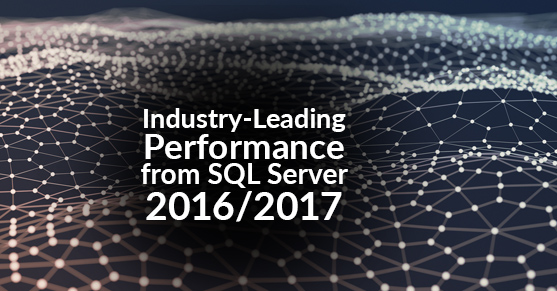As SQL Server 2008\2008 R2 EOS gets closer and closer, we’ve been reflecting on the numerous versions of SQL Server that have come to meet the same fate. Looking all the way back to 1989, SQL Server has consistently offered top-of-the-line database performance. Since SQL Server 2000, the platform has optimized database criteria for modern digital enterprise.
Over the years, Microsoft has rarely strayed from the path of innovation with SQL Server; every upgrade has come with cutting-edge features for improving database capabilities. Within the last 20 years alone — from SQL Server 2000 to 2017 — we’ve seen consistent originality and widespread fandom.
Let’s take a look at the path of SQL Server since SQL Server 2000 and how the platform has evolved and bent itself to the needs of its users:
- SQL Server 2000: Released with the modern database platform architecture introduced in SQL Server 7.0, SQL Server 2000 presented T-SQL language enhancements and new features like eXtensible Markup Language (XML) and Key Performance Indicators (KPIs).
- SQL Server 2005: This version replaced the old Sybase code of previous versions with the Microsoft code and came with Management Studio and database mirroring for increased availability.
- SQL Server 2008: Aimed to maximize performance and productivity, the 2008 version offered compression, policy-based management, and programmability.
- SQL Server 2008 R2: Integrating powerful Business Intelligence (BI) capabilities, version 2008 R2 came with PowerPivot (In-Memory), SharePoint Integration, and master data services.
- SQL Server 2012: With cloud technology at the forefront of the modern database, 2012 introduced Cloud integration, AlwaysOn availability, Power View, In-Memory ColumnStore, and data quality services.
- SQL Server 2014: Catering to the needs of digital enterprise, 2014 improved cloud options with hybrid-cloud optimization, HDInsight, and Cloud BI. It also included In-Memory across workloads and improved performance and scalability.
This path has lead to some of the biggest advancements in database performance, security, and cloud technology included in SQL Server 2016 and 2017. Introducing significant performance enhancers, end-to-end mobile BI, built-in AI, elaborate language/platform versatility, and simple migration to cloud services; SQL Server 2016/2017 are leading the field in database optimization.
In just a few weeks, service for SQL Server 2008\2008 R2 will be coming to an end and upgrading to the 2016 and 2017 versions will get you all the state-of-the-art qualities mentioned above. Getting into specifics, here are some of their top features of 2016/2017 that could benefit your business:
- With Always Encrypted data, access to personal identifiable information (PII) is more secure than ever. Whether at rest or transmitting, the data will be encrypted throughout wire processes.
- DDM is another level of security in SQL Server 2016/2017 and regulation compliance; developers troubleshooting in production environments will only see masked data instead of sensitive PII.
- Row-level security also helps security compliance by restricting row access to only users with specific permissions. Ultimately, it makes your system more secure and reduces the opportunity for hackers to view your sensitive data.
- Using T-SQL syntax, the temporal table automatically stores updates and deletes in history tables for easily creating audit trails and reports.
- Performance troubleshooting has never been easier (or effective) than with Query Store. Query plan comparisons are simplified and it eliminates the need for a third party system monitor.
- The Stretch database offers companies a way to free up storage on on-prem databases and easily move — and easily access again — stagnant historical data into an Azure environment.
- PolyBase uses T-SQL query to procure combined results from Hadoop file storage (or any other file system) and Azure Blob storage simultaneously for users. Instead of importing and processing all the data into SQL Server, the system can just grab it from your storage centers.
Overall, SQL Server 2016/2017 will improve your security, help you stay compliant, and reduce the amount of time your team spends performing tedious tasks. Even if your business is using SQL Server 2008 and EOS isn’t a concern of yours, there’s no doubt that upgrading to 2016 or 2017 will improve your database functions and business processes.
Between SQL Server 2016 and 2017, there are a few differences — for example, SQL Server 2017 can run on Linux and Docker containers (a big win) — but the features in both are leading the front line in database software, as SQL Server has been known to do. Whether your company is using SQL Server 2008 or even 2014, there’s nothing but benefits for upgrading to 2016 or 2017. If you need help upgrading your SQL Server database, our team at XTIVIA can provide everything you need. Contact us here or fill out the form below.

